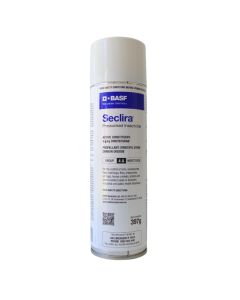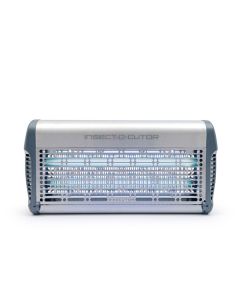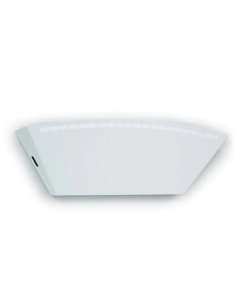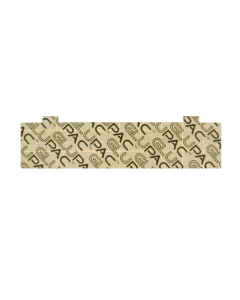Fruit Fly / Vinegar Fly / Fermentation Fly
- Article
- Fruit Fly / Vinegar Fly / Fermentation Fly
Fruit Fly / Vinegar Fly / Fermentation Fly
Scientific Name: Family Drosophilidae
How to identify a fermentation fly
Fermentation flies (Dacus spp.) are important pests to commercial industries and can cause much economic damage if unchecked. Vinegar (Fermentation, Bar or Beer) flies may become a nuisance in homes, restaurants, fruit markets, etc., especially when associated with decaying or rotting fruit and vegetables. Adult vinegar flies are about 3-5mm long, dull brownish-yellow to brownish-black with red eyes in some species. The head and thorax are tan-coloured, while the abdomen is black and grey underneath.
These should not be confused with the Queensland Fruit Fly Bactrocera tryoni that is a significant pest in the Agricultural / Horticulture in Australia.

Where are fermentation flies commonly found?
Fermentation flies are found primarily around decaying fruit. Indoors, these flies may be seen hovering around overripe fruit and vegetables, baked goods containing yeast, garbage cans and beverages/empty beverage containers, such as fruit juices, cider, soft drinks, beer, wine and vinegar.
Why are fermentation flies considered a pest?
Although fermentation flies have a potential to spread disease they are considered more of a nuisance pest than anything else. Populations can build up quickly and be very annoying for customers while eating or drinking. Contamination or food and drinks is also possible.
What is the biology and lifecycle of a fermentation fly?
Fermentation Flies have a lifespan of between 12 and 33 days. Females lay approx. 100 eggs in 24 hours. Under ideal conditions it takes 10 days for Fermentation Fly to progress from an egg to an adult. Adult flies are sexually active within 12 hours of emerging.
Management Tips for Fruit Fly/Vinegar Fly/Fermentation Fly
Fermentation Flies can prove extremely difficult to control and often the underlying issue is hygiene. The problem will continue unless the Hygiene issues are fixed. To simply apply a chemical without addressing the underlying reasons for the fly infestation will fix not the problem.
Tackling fermentation flies needs a multi faceted approach:
-
Breeding Site Removal –
-
Fermentation flies will breed on any decaying organic material. This can include floor / waste drains, garbage bins, food scraps under counters etc, coffee grinds.
-
Cleaning drains using products that contain enzymes will remove mould and organic matter from drains so eliminate breeding sites for fermentation flies.
-
Garbage bins should be emptied regularly and should always have lids on them. Garbage room doors should be kept closed at all times.
-
Regular cleaning of floors, surfaces and hard to get areas where food scrap accumulate should be carried out to illuminate breeding sites.
-
Make sure drink trays do not contain liquid for a long period of time and are cleaned regularly.
-
Inspect the premises for other possible breeding sites such as over watered pot plants, leaking plumbing pipes.
-
-
Traps
-
a number of disposable traps are available that attract adult flies and this will reduce the adult population. Normally these traps contain apple cider vinegar or similar to attract the flies.
-
Glueboard Flying insect units can help catch adult flies especially if they are placed close to problem areas eg under counters.
-
-
Chemical control
-
Chemical control should only be done in conjunction with other methods of control
-
Treating surfaces where the Fermentation flies land with a residual chemical will kill adults that land.
-
Metered Aerosol Dispensers - these can be effective against flying insects in limited spaces e.g. store room, cleaner’s room and garbage room. They have limited effect in large open areas.
-
Space spaying will kill adults and reduce the problem in the short term. Space spraying will not provide long term control.
-
PRODUCT SOLUTIONS
-
 Seclira Pressurised Insecticide 397g5g/kg Dinotefuran
Seclira Pressurised Insecticide 397g5g/kg DinotefuranSeclira Pressurised Insecticide is a fast-acting, non-repellent, ready-to-use product with System III compatibility for the control of a broad range of pests including ants, and cockroaches.
-
 Aqua-K-Othrine Insecticide Space-Spray Concentrate20g/L Deltamethrin
Aqua-K-Othrine Insecticide Space-Spray Concentrate20g/L DeltamethrinAqua K-Othrine is a pyrethroid based insecticide concentrate for use as a space-spray for the control of adult mosquitoes, flies, stored product pests and American and German Cockroaches.
-
 Chaindrite 2 Metered Insect Spray14g/kg Natural Pyrethrin + 60g/kg Piperonyl Butoxide
Chaindrite 2 Metered Insect Spray14g/kg Natural Pyrethrin + 60g/kg Piperonyl ButoxideLow odour natural pyrethrin insecticide for professional pest managers to eliminate flies and insects. This is a synergist aerosol designed to be used in atomiser units such as Bobson and Timemist metered spray units.
-
 Vectorforce ULV and Thermal Fogging Insecticide 5L25g/L Cypermethrin Solvent
Vectorforce ULV and Thermal Fogging Insecticide 5L25g/L Cypermethrin SolventVectorforce Thermal Fogging and ULV Insecticide Concentrate is formulated for the knockdown control of adult mosquitoes, biting midges, flies and cockroaches.
Out of stock -
 Halo 45 Glueboard Fly TrapProfessional Grade
Halo 45 Glueboard Fly TrapProfessional GradeWith a contemporary, discreet aesthetic and commercial efficacy, the second generation Halo 45 is the most versatile glueboard flykiller available for use across a range of commercial applications.
-
 Seclira WSG Insecticide400g/kg Dinotefuran
Seclira WSG Insecticide400g/kg DinotefuranSeclira® WSG insecticide is a non-staining, odourless, broad spectrum, general insect control product for indoor and outdoor use.
-
 Drop Ins Commercial Fruit Fly Trap
Drop Ins Commercial Fruit Fly TrapThe Drop Ins Commercial Fruit Fly Trap is a highly effective, non-toxic, pre-baited solution designed to target and trap fruit flies quickly and efficiently. Pre-baited with a powerful, food-grade lure that attracts up to 2.2 times more fruit flies than standard traps, this easy-to-use product is ideal for professional pest controllers, commercial kitchens, food storage areas, and indoor environments where fruit fly infestations occur.
-
 Seclira Pressurised Fly Bait 454g10g/kg Dinotefuran
Seclira Pressurised Fly Bait 454g10g/kg DinotefuranSeclira Pressurised Fly Bait is a new ground breaking, ready-to-use pressurised bait, enabling users to simply and precisely place bait where nuisance flies naturally go.
-
 Clear Out Plus IGR Aerosol Insecticide 350g0.5g/kg Fipronil, 0.15g/kg Pyriproxyfen
Clear Out Plus IGR Aerosol Insecticide 350g0.5g/kg Fipronil, 0.15g/kg PyriproxyfenClear Out Plus IGR Aerosol Insecticide is a residual surface crack & crevice or spot treatment for control of ants, cockroaches and flies in domestic, commercial and public buildings.
-
 Halo 30 Glueboard Fly TrapProfessional Grade
Halo 30 Glueboard Fly TrapProfessional GradeHalo 30 is a versatile, discreet glueboard fly trap that's silent in operation, making it ideal for sensitive areas such as food preparation, hotel lobbies, restaurant dining and other commercial back of house areas.
-
 Exocutor 30 Electric Fly Unit
Exocutor 30 Electric Fly UnitThe Exocutor 30 Electric Fly Unit features staggered tube positioning to ensure the maximum amount of UV light is radiated from all areas of the unit, luring flying insects into the highly effective triangular killing grid.
-
 Luralite Cento Glue Board Unit
Luralite Cento Glue Board UnitDeveloped as a highly effective but discreet solution for insect control, the Luralite Cento Glueboard Unit is ideal for use in restaurants, bars, cafes and other front of house applications.
-
 Brandenburg Genus Cobra LED Fly Trap Unit (2x18)
Brandenburg Genus Cobra LED Fly Trap Unit (2x18)A cost-effective and efficient fly trap unit with Translucent TechnologyTM that delivers a 180-degree window of attraction for increased fly catch.
-
 Insect-O-Matic 301 Uplighter Wall Mounted Glue Board Unit
Insect-O-Matic 301 Uplighter Wall Mounted Glue Board UnitCovers an area of up to 40m2 and is effective against all flying insects including flies, fruit flies and moths. Ideal for large lobbies, bars, dining areas and front of house applications. Silent in operation and caught insects are hidden from view.
Out of stock -
 Insect-O-Matic 301 Uplighter Replacement Glue Boards G2/4 (Pk10)Tricozene Z9
Insect-O-Matic 301 Uplighter Replacement Glue Boards G2/4 (Pk10)Tricozene Z9Glupac pheromone impregnated glueboard with UV stabiliser compatible with the Insect-O-Matic 301 Uplighter Wall Mounted Glueboard Unit (IOM301).
-
 Insect-O-Matic Nectar Glue Board Unit
Insect-O-Matic Nectar Glue Board UnitThe Insect-O-Matic Nectar Glue Board Unit uses UV light, removable trays which can be filled with melon scented liquid attractant, and glue boards to attract fruit flies, fermentation flies, vinegar flies, bar flies and other flying insects to the unit.
-
 Insect-O-Matic Nectar Replacement Glue Boards (6 pairs)Tricozene Z9
Insect-O-Matic Nectar Replacement Glue Boards (6 pairs)Tricozene Z9Glupac pheromone impregnated glueboard with UV stabiliser compatible with the Insect-O-Matic Nectar Glue Board Unit (IOMINEC).
-
 EnviroSafe Jumbo Fly Trap
EnviroSafe Jumbo Fly TrapIdeal for areas with big fly problems. The fly trap comes with 1 x Fly attractant and further EnviroSafe Jumbo Fly Trap Bait (PAT148/1) can be purchased separately.
Out of stock -
 Killgerm AF Demi-Diamond Fruit Fly Traps (Pack of 50)
Killgerm AF Demi-Diamond Fruit Fly Traps (Pack of 50)Killgerm AF Demi-Diamond Fruit Fly Traps (Pack of 50) are a cost-effective, reusable flying insect monitoring station designed to be used in conjunction with the AF Fruit Fly Glue Pads.
-
 SX Fly Inn Fruit Fly Lure (Pk10)
SX Fly Inn Fruit Fly Lure (Pk10)Designed specifically to monitor and control moths and fruit flies, this unit features a handy hook for easy placement and is easy to service using interchangeable sticky glue pads.
-
 PyMatic Metered Aerosol Insecticide14g/kg Pyrethrins and 60g/kg Piperonyl Butoxide.
PyMatic Metered Aerosol Insecticide14g/kg Pyrethrins and 60g/kg Piperonyl Butoxide.PyMatic Metered Insecticide is registered for use in automatic aerosol dispensers for total insect control in enclosed areas. Py Matic aerosol will dispense approx. 3,000 metered sprays and provide control for up to 30 days.
-
 Killmaster Zero Pest Insecticide Strip 65g
Killmaster Zero Pest Insecticide Strip 65gKillmaster Zero Pest Strip is a highly effective, long-lasting solution for managing a wide range of flying and crawling insect pests, including cockroaches, moths, silverfish, ants, and flies. Designed for non-living areas such as storage spaces, store rooms, and industrial bins, this pest strip provides hassle-free protection for up to 4 months.
Out of stock
JOIN OUR NEWSLETTER NOW!
Be the first to hear about the latest specials, products, tips and ideas.

